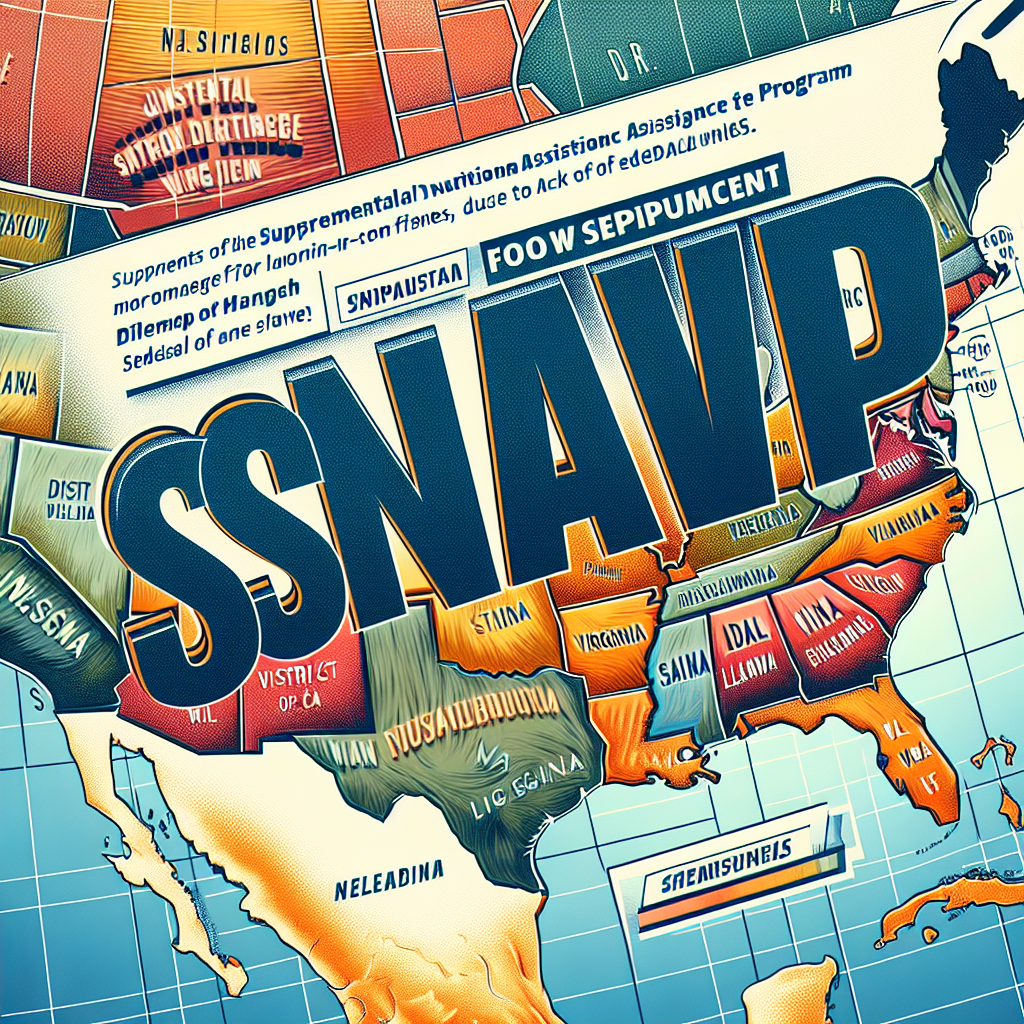On Saturday, November 1st, the United States government announced the suspension of the Supplemental Nutrition Assistance Program (SNAP), also known as “food stamps,” for low-income families due to the depletion of federal funds. Currently, only the District of Columbia, Virginia, Delaware, Louisiana, New Mexico, and Vermont have stated that they can continue to provide partial or full food stamp benefits in November.
In response to the situation, Governor Glenn Youngkin of Virginia stated that the state is using budget surplus to implement a temporary plan to distribute food stamp benefits on a weekly basis at least for the month of November. According to data from the U.S. Department of Agriculture, Virginia spends approximately $143 million per month on food stamps.
Delaware has indicated that they will provide benefits on a weekly basis in November if necessary. Louisiana, Vermont, and New Mexico are offering partial benefit funds.
Other states are unable to provide assistance due to technical or funding issues, with some not providing a clear explanation for the halt in benefits.
The United States currently has around 41 million people relying on food stamps, with the federal government spending approximately $8 billion on this social welfare program each month.
Two federal judges ruled on Friday, October 31st, that the federal government must not suspend food stamp benefits for November and must use emergency funds of around $5 billion for payment, with an update on the situation required by Monday, November 3rd. Former President Trump has instructed officials to find ways to fund food stamps.
The U.S. Department of Agriculture has attributed the interruption of food aid to the Democratic Party, claiming that the government shutdown is a result of their actions. Democrats, on the other hand, criticize the department for not utilizing emergency funds for partial November benefits.
According to data from the U.S. Department of Agriculture, the amount of food stamp funds received by each state per month varies significantly, ranging from $4.9 million in Wyoming to over $1 billion in California. These funds are distributed through electronic systems to beneficiaries’ EBT cards. Some states face technical limitations in independently distributing funds to beneficiaries.
Governor Bill Lee of Tennessee stated that the state cannot utilize state funds to provide food stamp benefits since there is no mechanism in place to transfer funds to beneficiaries’ cards.
Other states have pointed out that the amounts involved are too large for them to handle independently. A notice on the Massachusetts Transitional Assistance Department’s website stated, “Massachusetts receives over $210 million in federal food stamp funds monthly, and the state budget cannot cover the gap caused by even a one-month federal funding interruption.”
States like Connecticut, New Mexico, and West Virginia have mentioned providing additional funds to food banks. However, food banks are already overwhelmed due to the increase in hunger in America, and may struggle to meet the needs of more people after the food stamp suspension.
Many states are urging food stamp recipients to manage their expenses wisely and visit food distribution centers, while also encouraging the public to donate time and money during the benefit hiatus. The Arkansas Department of Human Resources is promoting community support to ensure that families do not go hungry.
Roma Hammonds, a resident of Chattanooga, Tennessee, who has had custody of her grandchildren for the past five years, has relied heavily on food stamps. Unable to work due to a disability, the 60-year-old Hammonds stated that she can only support her family of four with $563 in food stamps per month, covering expenses including rent. Facing the crisis of suspended food stamps, Hammonds expressed her uncertainty, stating, “I don’t know what to do.”
(This article references reporting from Reuters)

